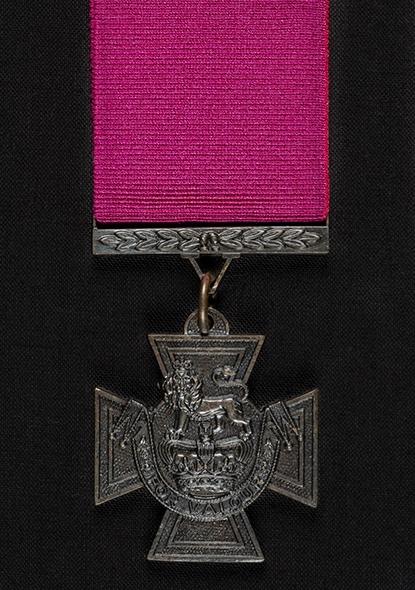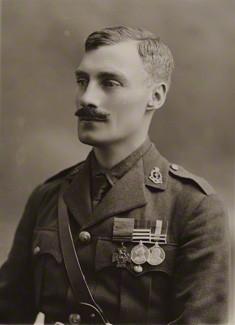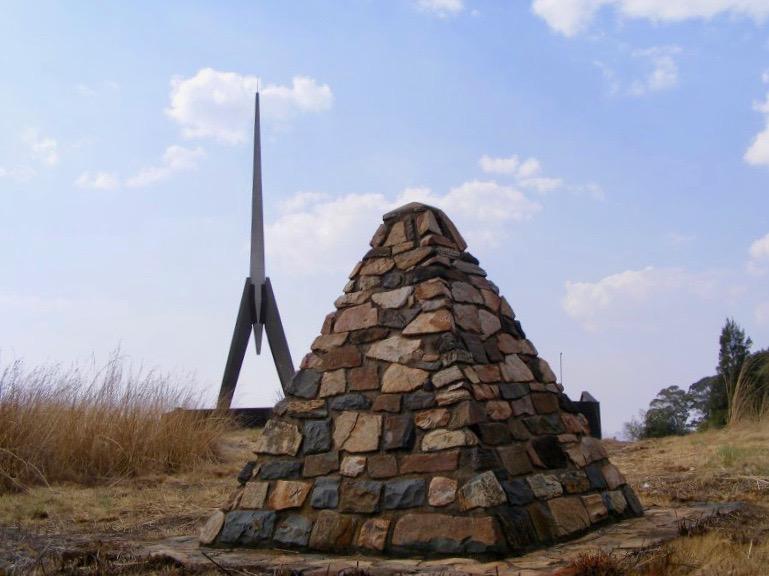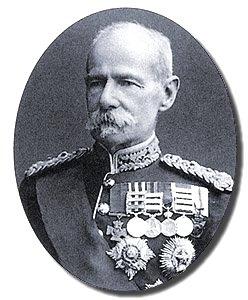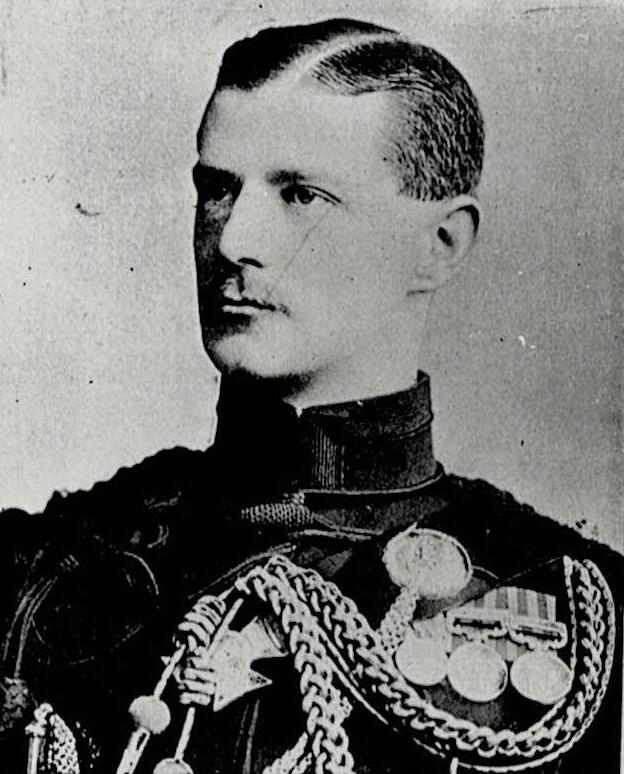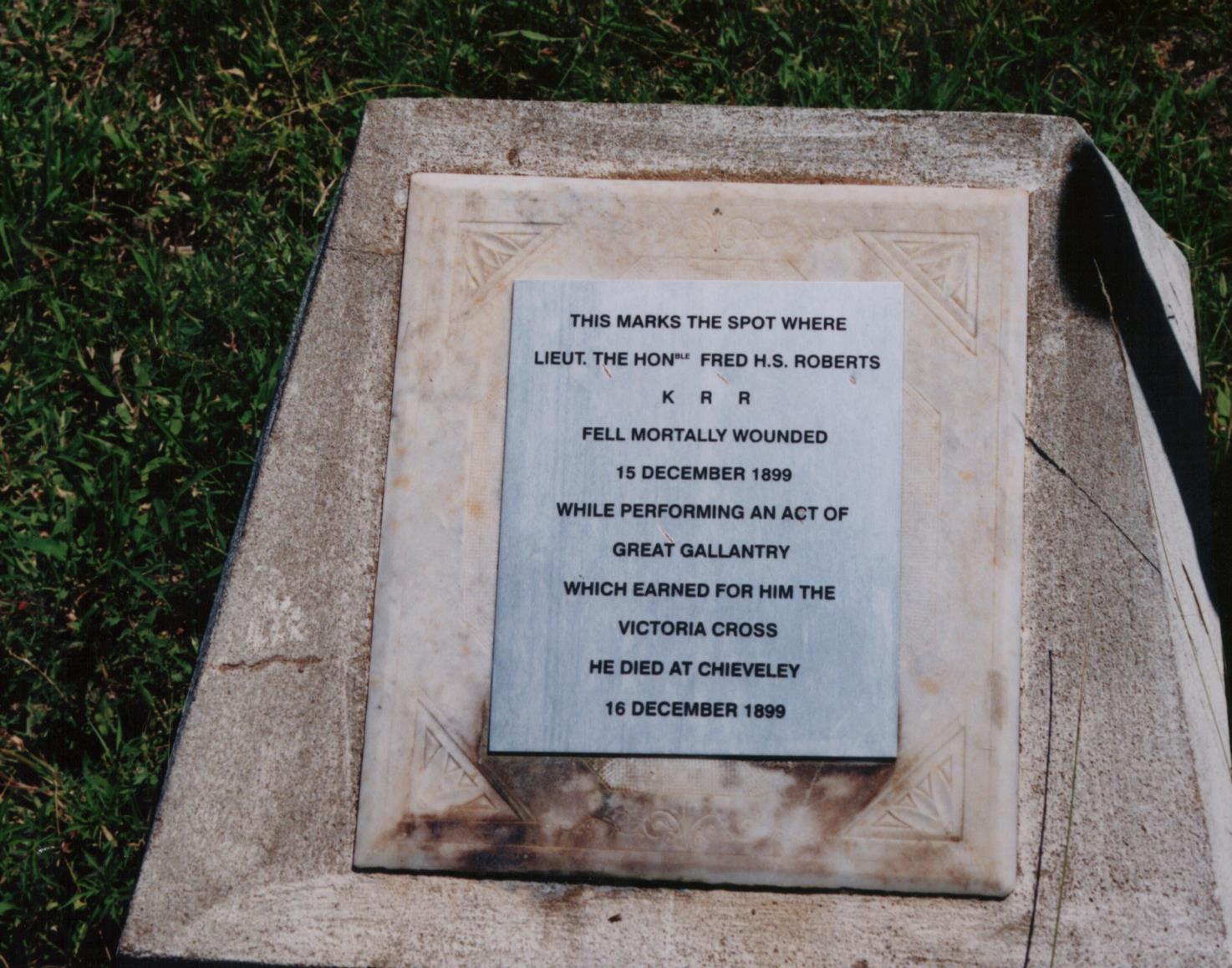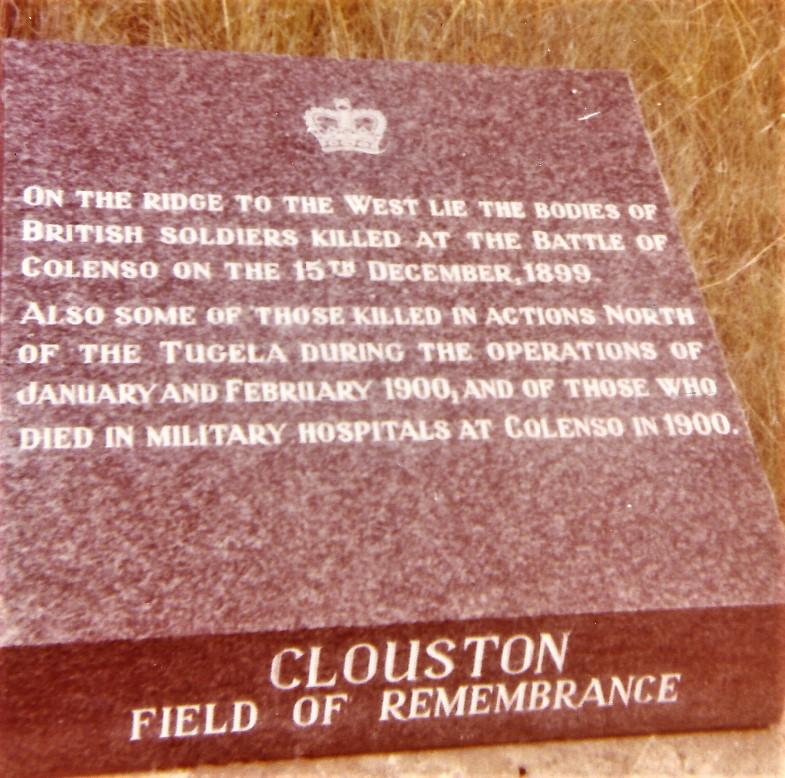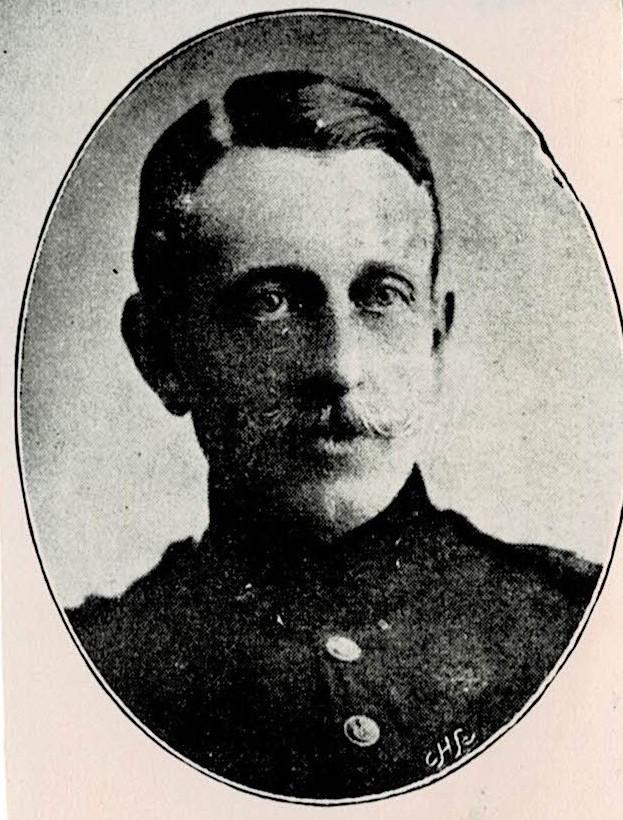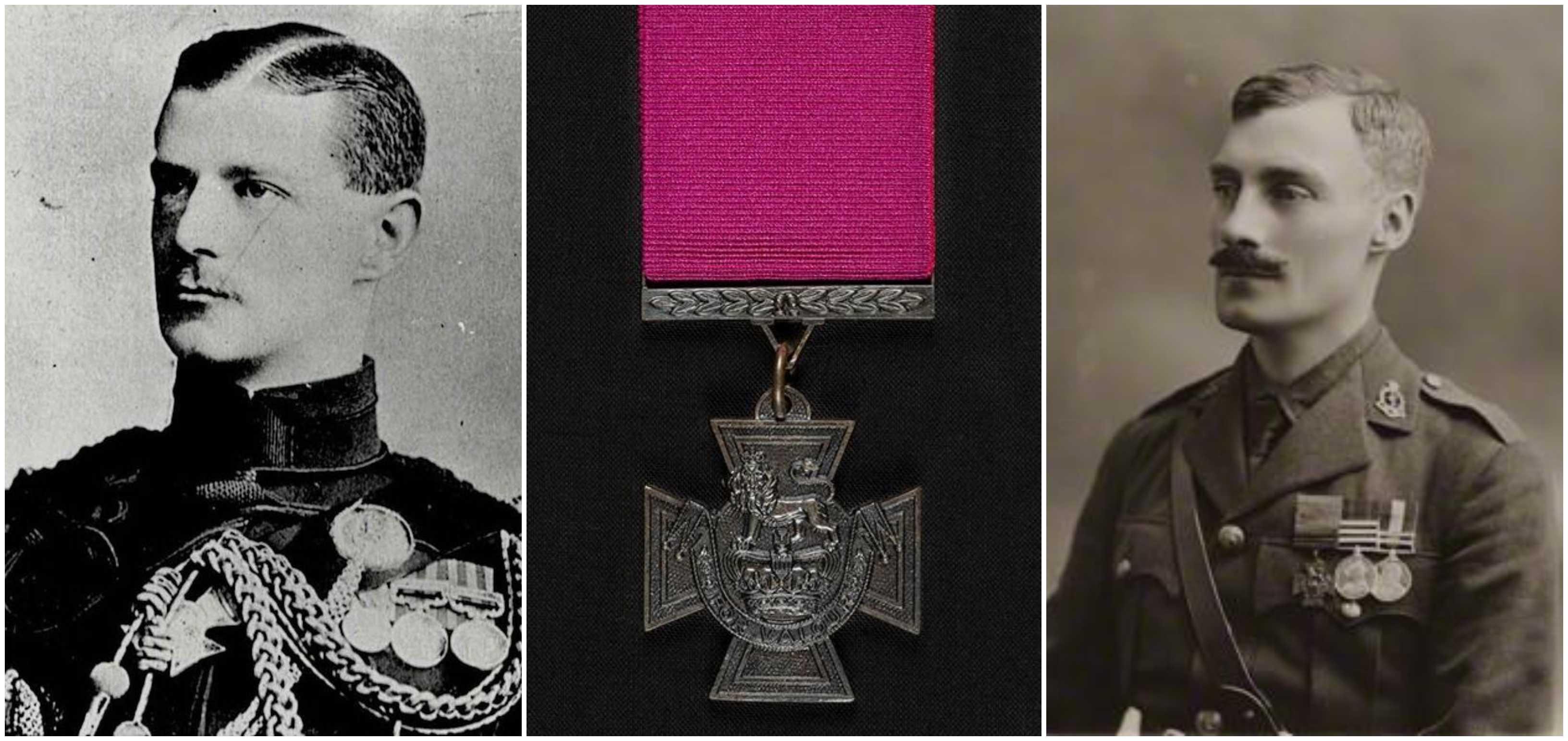
Disclaimer: Any views expressed by individuals and organisations are their own and do not in any way represent the views of The Heritage Portal. If you find any mistakes or historical inaccuracies, please contact the editor.
For those that want to find out more about this story, there is a special 'Relief of Ladysmith' anniversary tour happening on 25-27 February 2022. Click here for full details.
A notice appeared in the London Gazette of 5 February 1856 announcing the creation by Queen Victoria of Britain’s premier award for gallantry, for all ranks since the outbreak of the Crimean War in 1854. Its description and criteria for the award were:
- “The distinction shall be styled and designated the “Victoria Cross” and shall consist of a Maltese cross of bronze with our Royal Crest in the centre, and underneath which a scroll bearing the inscription “For Valour”; On the reverse of the cross is engraved the date of the act of bravery and the name of the recipient is engraved on the back of the suspender.
- The Cross shall only be awarded to those officers or men who have served Us in the presence of the enemy, and shall have then performed some signal act of valour, or devotion to their country”.
Victoria Cross (Wikipedia)
The award was open to all ranks and services. Where the act of bravery was performed by a group of men, officers and other ranks had the privilege of selecting, one of more of their number to receive the honour. This was the case for some of the VCs awarded for the battle of Elandslaagte 21st October 1899.
The award of the Cross also attracted a special pension of 10 Pounds per annum, but the Cross could be forfeited if the recipient was subsequently convicted of “treason, cowardice, felony or of any infamous crime….”. This remained in place until the 1920s when King George V insisted that the policy be changed. He argued that with the increasing difficulty in obtaining the award that it should not ever be forfeited. He commented that, should a VC recipient later in his life be convicted for a capital crime, that he should still be permitted to wear the decoration on the gallows. The eight men who lost their VCs were restored to official lists. In 1898, Queen Victoria raised the pension to £50 for those that could not earn a livelihood, be it from old age or infirmity. Today, holders of the Victoria Cross or George Cross are entitled to an annuity, the amount of which is determined by the awarding government. Since 2015, the annuity paid by the British Government is £10,000 per year.
The first awards were published in the London Gazette of 24 February 1857, and 62 of the 111 Crimean recipients were invested with their awards by the Queen on 26 June 1857. At the time there was no provision for posthumous awards. In 1905 this was changed to allow for the medal to be awarded posthumously.
The Cross was originally suspended on a maroon ribbon for the Army and a blue one for the Navy. However, by Royal Warrant of 22 May 1920, signed by Winston Churchill, the ribbon became red for all services. When the ribbon is worn, a small replica of the cross is fitted to the centre.
Indian troops were not originally eligible for the Victoria Cross, as they had been eligible for the Indian Order of Merit (since 1837), which was the oldest British gallantry award for general issue. When the Victoria Cross was created, Indian troops were still controlled by the Honourable East India Company. European officers and men, serving with the Honourable East India Company, were not eligible for the Indian Order of Merit and thus the Victoria Cross was extended to cover them in October 1857. In 1911 Indian troops became eligible for the award. The award of the Victoria Cross was extended to colonial troops in 1867.
The Royal Artillery is the corps that has won the highest number of Victoria Crosses. This unit has won the Victoria Cross 51 times, the Royal Engineers have won the Victoria Cross 41 times and the Royal Army Medical Corps 27 times. A total of 1,358 Victoria Crosses have been awarded since 1856 to 1,355 men.
Three people have been awarded the VC and Bar, the bar representing a second award of the VC. These were Lieutenant A Martin-Leake, and Captain N G Chavasse, both doctors in the Royal Army Medical Corps, for rescuing wounded under fire and an infantry man Charles Upham. Capt Chavasse unfortunately did not live to receive the reward.
Lieut Martin-Leake was awarded his first VC for actions in the Anglo Boer War and his second for actions during the First World War. Capt Chavasse received both medals for actions in the First World War, while third recipient New Zealander, Charles Upham, received both VCs for actions during the Second World War. Four pairs of brothers and three fathers and sons have been awarded the VC.
Lieut Martin-Leake (Talana Museum)
Two of the father and son awards have a connection with the Anglo Boer War
In 1858, during the Indian Mutiny, Lieutenant (later Field-Marshal) Earl Roberts of the Bengal Artillery was awarded the VC. His son, the Hon. F.H.S. Roberts of the King's Royal Rifle Corps, earned his posthumous VC in the South African War at the battle of Colenso, Natal on December 15th, 1899.
On the same day, Captain W.N. Congreve, Rifle Brigade, was awarded the VC and his son, W. la T. Congreve earned his posthumous award for bravery in France between July 6th and 20th 1916.
The question of whether awards could be made to colonial troops, not serving with British troops, was raised in South Africa in 1881. Surgeon John McCrae, an officer of the South African forces was recommended for gallantry during hostilities, which had not been approved by the British Government.
McCrea was born on 2 April 1854 at St Peter Port, Guernsey Following his parents' deaths in 1855, he was brought up by his aunt Charlotte in Guernsey and educated at Elizabeth College. He studied medicine at Guy's Hospital, qualifying in 1878 as a member of the Royal College of Surgeons of England and Edinburgh.
In 1879 he arrived in South Africa, where he was based at the Military Hospital in Cape Town as Civilian Surgeon to Her Majesty's Forces. A year later he moved to Fort Beaufort, to settle, but decided instead to join the 1st Regiment, Cape Mounted Yeomanry as a surgeon.
McCrea was 26 years old, and a Surgeon in the 1st Cape Mounted Yeomanry, South African Forces during the Basuto Gun War. On 14 January 1881, at Tweefontein, the burghers had been forced to retire, with a loss of 16 killed and 21 wounded. Surgeon McCrea was the only doctor present and although suffering from a serious wound on the breast bone, which he had dressed himself, continually brought casualties into shelter and attended to the wounded throughout the day. For this he was awarded the Victoria Cross and the principle was established, that gallant conduct could be rewarded independently, of any political consideration of military operations.
McCrea was promoted to the rank of Surgeon Major and on 3 February 1882 transferred to the Cape Mounted Riflemen. He remained with the regiment and married a South African, Elizabeth Antoinette (Bessie) Watermeyer. He died of heart failure in Kokstad, Cape Colony on 16 July 1894.
Arthur Martin-Leake was born on 1 April 1874 and qualified as a doctor in 1898. In 1899 he joined the Hertfordshire Company of the Imperial Yeomanry as a trooper. He remained with this Company during its time in South Africa, taking part in several important engagements, including Prinsloo’s surrender. When the Company returned to England he remained in South Africa and was employed by the army as a civil surgeon. When the South African Constabulary was formed by Gen Baden-Powell he joined with the rank of Surgeon Captain and served until he was invalided back to England due to wounds. His Victoria Cross was presented to him by King Edward VII at St James’s Palace on 2 June 1902.
While convalescing from wounds, he completed his studies and qualified as a Fellow of the Royal College of Surgeons in 1903. He then took up an appointment in India as Chief Medical Officer with the Bengal-Nagpur Railway.
In 1912, he volunteered to serve with the British Red Cross during the Balkan Wars. Attached to the Montenegran army, he saw considerable combat and was awarded the Order of the Montenegran Red Cross. At the outbreak of the First World War, he returned to service as a Lieutenant with the 5th Field Ambulance, Royal Army Medical Corps, on the Western Front.
He was awarded his second VC, aged 40 for his actions 29 October to 8 November 1914 near Zonnebeke, Belgium, whilst serving with the RAMC. He was promoted Captain in March 1915, Major in November 1915, and in April 1917 took command of 46th Field Ambulance at the rank of Lieutenant Colonel. He retired from the army after the war and resumed his company employment in India until he retired and returned to England in 1937.
During the Second World War, he commanded an ARP post. He died, aged 79, at High Cross, Hertfordshire. His Victoria Cross is displayed at the Army Medical Services Museum, Aldershot, England.
The Citation for his awards read:
South Africa
During the action at Vlakfontein, on the 8th February, 1902, Surgeon-Captain Martin-Leake went up to a wounded man and attended to him under a heavy fire from about 40 Boers at 100 yards range. He then went to the assistance of a wounded Officer, and, whilst trying to place him in a comfortable position, was shot three times, but would not give in till he rolled over thoroughly exhausted. All the eight men at this point were wounded, and while they were lying on the Veldt, Surgeon-Captain Martin-Leake refused water till everyone else had been served.
Belgium
Lieutenant Arthur Martin Leake, Royal Army Medical Corps, who was awarded the Victoria Cross on 13th May, 1902, is granted a Clasp for conspicuous bravery in the present campaign: - For most conspicuous bravery and devotion to duty throughout the campaign, especially during the period 29th October to 8th November, 1914, near Zonnebeke, in rescuing, whilst exposed to constant fire, a large number of the wounded who were lying close to the enemy's trenches.
Field Marshal Frederick Sleigh Roberts, 1st Earl Roberts VC KG KP GCB OM GCSI GCIE KStJ VD PC (30 September 1832 – 14 November 1914)
He served in the Indian rebellion, the Expedition to Abyssinia, the Second Anglo-Afghan War, and the Second Anglo Boer War. He became the last Commander-in-Chief of the Forces.
Born at Cawnpore, India, on 30 September 1832, Roberts was the son of General Sir Abraham Roberts, a native of County Waterford, Ireland. At the time of his birth, Sir Abraham was commanding the 1st Bengal European Regiment and Roberts was named Sleigh in honour of the garrison commander, Major-General William Sleigh.
After completing his education at Eton, Sandhurst and Addiscombe Military Seminary he entered the East India Company Army as a Second Lieutenant with the Bengal Artillery on 12 December 1851. He became ADC to his father in 1852, transferred to the Bengal Horse Artillery in 1854 and was promoted to Lieutenant on 31 May 1857.
Roberts fought in the Indian Mutiny 1857, seeing action during the siege and capture of Delhi where he was slightly wounded, and being present at the relief of Lucknow. He was awarded the Victoria Cross for actions on 2 January 1858 at Khudaganj. The citation reads:
Lieutenant Roberts' gallantry has on every occasion been most marked. On following the retreating enemy on the 2nd January, 1858, at Khodagunge, he saw in the distance two Sepoys going away with a standard. Lieutenant Roberts put spurs to his horse, and overtook them just as they were about to enter a village. They immediately turned round, and presented their muskets at him, and one of the men pulled the trigger, but fortunately the caps snapped, and the standard-bearer was cut down by this gallant young officer, and the standard taken possession of by him. He also, on the same day, cut down another Sepoy who was standing at bay, with musket and bayonet, keeping off a Sowar. Lieutenant Roberts rode to the assistance of the horseman, and, rushing at the Sepoy, with one blow of his sword cut him across the face, killing him on the spot.
He was also mentioned in despatches for his service at Lucknow in March 1858. In common with other officers he transferred from the East India Company Army to the Indian Army that year.
Rising steadily through the ranks he transferred to the British Army in 1861 and served in the Umbeyla and Abyssinian campaigns of 1863 and 1867–1868. He continued to be promoted and 30 January 1875 became a Brevet Colonel. That year he became Quartermaster-General of the Bengal Army.
As commander of the Kurram field force in March 1878, he took part in the Second Anglo-Afghan War, once again distinguishing himself, receiving the thanks of Parliament, further promotions and to Knight Commander of the Order of the Bath (KCB) on 25 July 1879.
For his services in Afghanistan 1880, he again received the thanks of Parliament, and was advanced to Knight Grand Cross of the Order of the Bath (GCB) on 21 September 1880 and appointed Companion of the Order of the Indian Empire (CIE).
After a very brief interval as Governor of Natal and Governor and Commander-in-Chief of the Transvaal Province and High Commissioner for South Eastern Africa from 7 March 1881, Roberts (having become a baronet on 11 June 1881) was appointed Commander-in-Chief of the Madras Army on 16 November 1881. He became Commander-in-Chief, India on 28 November 1885 and was advanced to Knight Grand Commander of the Order of the Indian Empire (GCIE). He was promoted to General on 31 December 1891 and 0n 23 February 1892 he was created Baron Roberts of Kandahar in Afghanistan and of the City of Waterford.
After relinquishing his Indian command, he relocated to Ireland as Commander-in-Chief of British forces there, from 1 October 1895. He was promoted Field Marshal on 25 May 1895 and received the Order of St Patrick during 1897.
On 23 December 1899, Roberts returned to South Africa to take overall command of British forces in the Second Boer War. He won the last victory of his career at Bergendal on 27 August 1900. The Boer forces disintegrated, and with the war apparently effectively over, Roberts handed over command on 12 December to Lord Kitchener.
Bergendal Memorial (Karin Olivier)
He returned to England to receive yet more honours: he was made a Knight of the Garter and also created Earl Roberts of Kandahar in Afghanistan and Pretoria in the Transvaal Colony and of the City of Waterford and Viscount St Pierre.
He became a Knight of Grace of the Order of St John and then a Knight of Justice of that order on 3 July 1901. On 9 August 1902 he was also appointed one of the first members of the Order of Merit. He was awarded the German Order of the Black Eagle during the Emperor's visit to the United Kingdom in February 1901.
Lord Roberts became the last Commander-in-Chief of the Forces on 3 January 1901 and served in that role for three years before the post was abolished.
In retirement, he was a keen advocate of introducing conscription in Britain, (directing the National Service League) to prepare for a great European war. Following his return from the Boer War, he was instrumental in promoting the mass training of civilians in rifle shooting skills through membership of shooting clubs.
On 28 February 1908 he was awarded the Volunteer Officers' Decoration in recognition of his service in the Volunteer Force. He served as honorary colonel to 17 regiments from 1887 until 11 November 1914 (three days before his death). He was Colonel of the National Reserve from 5 August 1911.
He took part in the funeral procession of both Queen Victoria in January 1901 and King Edward VII in May 1910.
Roberts was approached for advice about the Ulster Voluntary Force, formed in January 1913 by Ulstermen who had no wish to be part of a Home Rule Ireland. Too old to take active command, Roberts recommended Lt-Gen Sir George Richardson, formerly of the Indian Army, as commander.
He died of pneumonia at St Omer, France, on 14 November 1914 while visiting Indian troops fighting in the First World War.
After lying in state in Westminster Hall (one of two non-Royals to do so during the 20th century, the other being Sir Winston Churchill), he was given a state funeral and was then buried in St. Paul's Cathedral. His coffin was carried on the gun, which his son had tried to save at Colenso on 15 December 1899.
Lord Roberts (Talana Museum)
The Honourable Lieutenant Frederick Sherston Roberts (born at Umballa, India on 8 February 1872)
He entered the King’s Royal Rifle Corps on 10 June 1891 and in the following 4 years saw active service on the north-west frontier of India, receiving medals and clasps and being mentioned in despatches. In the Anglo Boer War he lost his life at the Battle of Colenso in an attempt to save the guns of the 14th and 66th Batteries, Royal Field Artillery.
Freddie Roberts (Talana Museum)
They had dashed forward far in advance of their flank supports and opened fire on the Boer positions. Without shelter and in full view of the strongly entrenched enemy, they became the target of massive rifle fire which killed the horses and the gunners around the guns. There were too few men left to service the guns and with no possibility of relief or support the guns were abandoned. But Col Long had said as they removed him from alongside the gun where he had fallen, “Abandon be damned! We don’t abandon guns.” Lieut Roberts was one of those who answered the call for volunteers to save the guns. He was mortally wounded while trying to do so. For his gallantry he, Captain’s Schofield and Congreve were awarded the Victoria Cross.
Tablet to mark the site of the guns at Colenso (Talana Museum)
His Victoria Cross was gazetted on 2 January 1900:
The Honourable Frederick Sherston Roberts (since deceased), Lieutenant Kings Royal Rifle Corps. At Colenso. On 15th December 1899, the detachment serving the guns of the 14th and 66th batteries, Royal Field Artillery, had either all been killed, wounded or driven from their guns by infantry fire at close range and the guns were deserted. About 500 yards behind the lines was a donga, in which some of the few horses and drivers left alive were sheltered. The intervening space was swept by shell and rifle fire. Capt Congreve, Rifle Brigade, who was in the donga, assisted to hook a team into a limber, went out and assisted to limber up a gun. Being wounded, he took shelter, but seeing Lieut Roberts fall badly wounded, he went out again and brought him in. With him went the gallant Major Babtie, of the RAMC, who had ridden across the donga amid a hail of bullets, and had done what he could for the wounded men. Capt Congreve was shot through the leg, through the toe of his boot, grazed on the elbow and shoulder, and his horse shot in 3 places. Lieut Roberts assisted Capt Congreve. He was wounded in 3 places.
Plaque marking the spot where Freddie Roberts fell (Talana Museum)
Captain Walter Norris Congreve (Born on 20 November 1862. Educated at Harrow, he entered the Rifle Brigade in 1885 and became a Capt in 1893).
For his service in South Africa he was twice mentioned in despatches, received the Queens South Africa medal with 7 bars, the Kings South Africa medal with 2 bars, and the Victoria Cross. An account in the London Gazette reads:
Walter Norris Congreve, Captain, The Rifle Brigade. Date of Act of Bravery: 15 December 1899. At Colenso, on 15th Dec. He won he Victoria Cross with several others in an attempt to save Col Long’s guns at Colenso. Capt Congreve served on the Staff in South Africa, as AMS and Private Secretary to Lord Kitchener. In 1900 he married Celia, daughter of Capt C B La Touche, and they had 3 sons, one of whom was Major Congreve, VC, DSO, and MC who won his VC on the Somme. Walter was promoted Major, and then Lieut Colonel on 21 December 1901. In December 1902, he became Assistant Military Secretary and ADC to HRH the Duke of Connaught in Ireland, being made a Member of the Royal Victorian Order by His Majesty the King on a visit to that country in 1903. He became Major-General in 1915 and Lieut General in 1918, and was created a KCB in 1917. He lost his left hand in 1917 and wore a prosthetic replacement. Gen Sir WN Congreve was a Commander of the Legion of Honour and held the Order of St Anne of Russia, First Class. Congreve became governor of Malta and died while in office on 26 February 1927. He was buried at sea.
Monument at Clouston Colenso Field of Remembrance (Talana Museum)
The following is an extract from a letter written by Capt Congreve:
I was a galloper to Gen Clery, who rode all day with Sir Redvers Buller. About ten o’clock two batteries, which had advanced too close, ran short of ammunition. Their limbers were about 800 yards behind. Horses and men were sheltering in a deep narrow nullah. Gen Buller told them to take the limbers up to the battery, but directly they emerged a storm of bullets and shells fell all around … Generals Clery and Bulle said: “Some of you go and help”. Schofield (ADC), Roberts (Lord Robert’s son) and myself, with the help of a corporal and 6 gunners, went to the limbers, and got 2 of them horsed. I have never seen, even at field firing, the bullets fly thicker. All one could see was little tufts of dust all over the ground, a whistling noise - “phux” where they hit, and an increasing rattle of musketry, somewhere in front. My first bullet went through my left sleeve, and made the joint of my elbow bleed, next a clod of earth caught me smack on the right arm; then my horse got one, then my right leg, my horse another, and that settled us, for he plunged, and I fell about a hundred yards short of the guns we were going to.
Walter Norris Congreve (Talana Museum)
William La Touche Congreve (Billy) VC, DSO, MC (12 March 1891 – 20 July 1916)
La Touche was 25 years old, and a major in The Rifle Brigade, during the First World War. From 6 to 20 July 1916 at Longueval, France, Major Congreve constantly inspired those round him by numerous acts of gallantry and bravery. As Brigade Major he conducted battalions up to their positions. When the brigade headquarters was heavily shelled he went out with the medical officer to carry the wounded to places of safety, even though he was suffering from gas and other shell effects. He went out again on further occasions tending the wounded under heavy shell fire. After returning from the front line to ascertain the position, after an unsuccessful attack, he was shot by a sniper and died instantly.
There is a special 'Relief of Ladysmith' anniversary tour happening on 25-27 February 2022. Click here for full details.
Pam McFadden has spent many years researching the battlefields of KwaZulu-Natal. She has been interested in them since a young child. As a registered specialist guide on these battlefields for the past 40 years her knowledge about events and the people involved is considerable. Since 1983 as curator, Pam McFadden has developed the Talana Museum in Dundee into one of the finest in the country. She retired as Curator at the end of November 2021 but remains on the Board of Trustees and continues to work on the digitisation of the museum archives project. As part of the museum collections she has collected and created an extensive museum archive that holds many treasures.
References
- Talana Museum archives
- Great Stories of the Victoria Cross, Sir John Smyth
Comments will load below. If for any reason none appear click here for some troubleshooting tips. If you would like to post a comment and need instructions click here.

